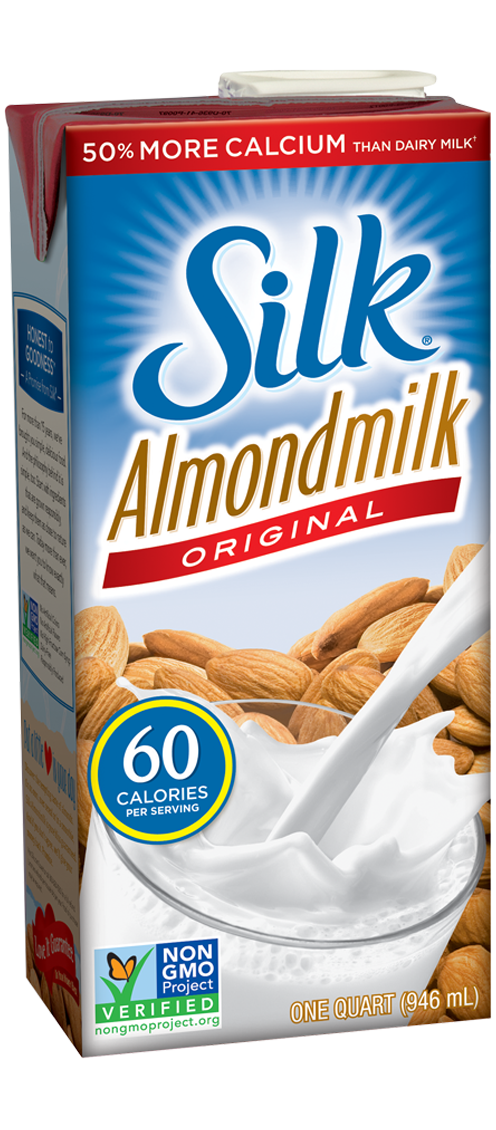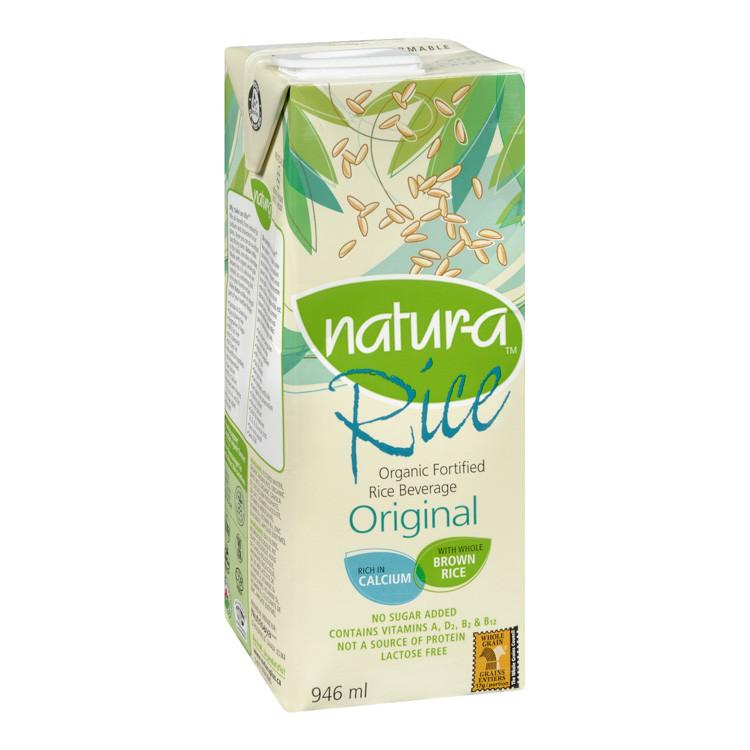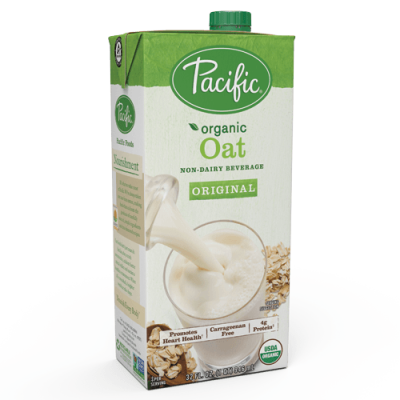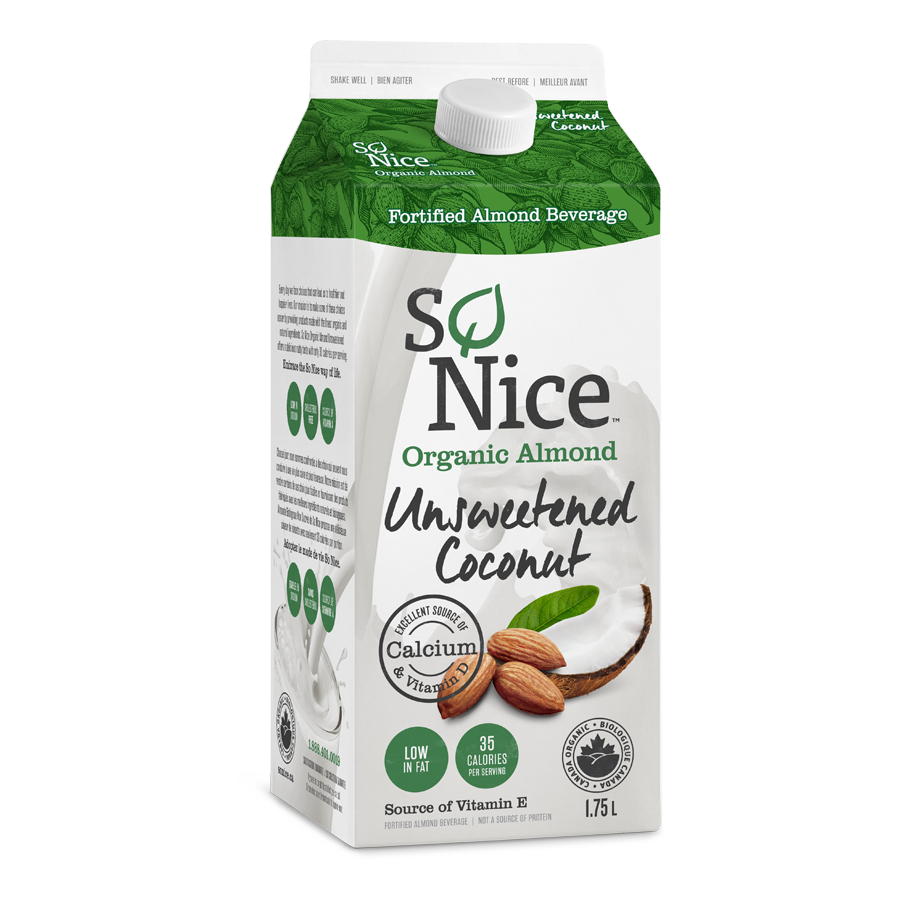Milk alternatives have become a popular option over the recent years. So popular that most coffee shops offer milk alternatives on their menu. Dairy choices are nutritious and could be part of a healthy diet plan. Individuals may choose to avoid dairy products due to various reasons including:
- lactose intolerance
- certain eating patterns (e.g. vegetarian and vegan diets)
- other intolerances to dairy products
In such cases, people look for milk alternative to meet their nutritional requirements and to enjoy foods that use dairy as their main ingredient (e.g. lattes).
Below is a list of the more popular milk alternatives including a short summary of nutritional pros and cons for each beverage.
Soy Beverage
How is it prepared?
Extracting the liquid from cooked and pressed soybeans.
Pros:
-
- Good source of protein ( ~ 6 to 10 grams per cup)
-
- Source of heart healthy monounsaturated and polyunsaturated fatty acids (including omega-3 fats)
-
- Provides some fibre ( ~ 2 grams per cup)
- Contains phytonutrients which are suggested to protect against cancer
Cons:
- Concerns regarding the effect of estrogen like compounds that are naturally present in soybeans – Note that harmful effects have not been observed except for rare occurrences in individuals who had underlying health conditions such as hypothyroidism

Nut Beverage
How is it prepared?
By grounding nuts (e.g. almonds, cashews), blending them with water, and filtering out the solids
Pros:
-
- Very low in calories (may be useful for weight management)
-
- Source of heart healthy monounsaturated fats
- Pleasant nutty taste
Cons:
-
- Very low in protein
- If not fortified, low in vitamins and minerals – however, most brands are fortified with nutrients.
Rice Beverage
How is it prepared?
By boiling rice to extract rice starch
Pros:
- Slightly sweet taste makes it more acceptable for those who have a sweet tooth
Cons:
-
- Low in protein ( ~ 1 gram per cup)
-
- More calories from simple carbohydrates ( ~ 10 grams sugar per cup)
- If not fortified, low in vitamins and minerals – however, most brands are fortified with nutrients.
Oat Beverage

How is it prepared?
By blending oats and water, and filtering out the solids
Pros:
-
- Provides some protein ( ~ 4 grams) per cup
- Provides some fibre ( ~ 2 grams) per cup
Cons:
-
- More calories from simple carbohydrates ( ~ 6 grams sugar per cup)
- If not fortified, low in vitamins and minerals – however, most brands are fortified with nutrients.

Coconut Beverage
How is it prepared?
By blending coconut with water, and filtering out the solids
Pros:
- Has a nutty flavour which is pleasant for many
Cons:
-
- Very low in protein
-
- Contains a significant amount go saturated fat – Note: it is suggested that the type of saturated fat in coconuts may not have the harmful effect of animal-based saturated fats, but the research is ongoing. Hence, it is suggested that you limit your intake of coconut milk
- If not fortified, low in vitamins and minerals – however, most brands are fortified with nutrients
Hemp Beverage
How is it prepared?
By soaking and grinding hemp seeds in water and filtering out the solids
Pros:
- Source of healthy omega-3 and omega-6 fatty acids
- Provides some protein ( ~3 grams per cup)
- Nutty and rich flavour
Cons:
-
- Very low in protein
- If not fortified, low in vitamins and minerals – however, most brands are fortified with nutrients.
Bottom Line:
The preferred dairy substitute is soy beverage since it provides an amount of that is comparable to cow’s milk, and other nutrients including healthy fats and phytochemicals.
It is important to note that other than soy, most milk substitutes are very low in protein. Milk alternatives are also very low in most vitamins and minerals. Of course, these products are commonly fortified with nutrients including calcium and other vitamins and minerals to resemble the nutritional value of cow’s milk. Be advised that in Canada vitamin D is added to milk (as a commonly consumed beverage) to account for low vitamin D levels that result from limited exposure to sunlight. Hence, it’s important that you ensure milk alternatives are fortified with adequate vitamin D levels.
When purchasing milk alternatives, choose the unsweetened option. The sweetened versions are high in added sugar, which is not suggested for regular consumption. You can always flavour beverages yourself to take control of the sugar added.

